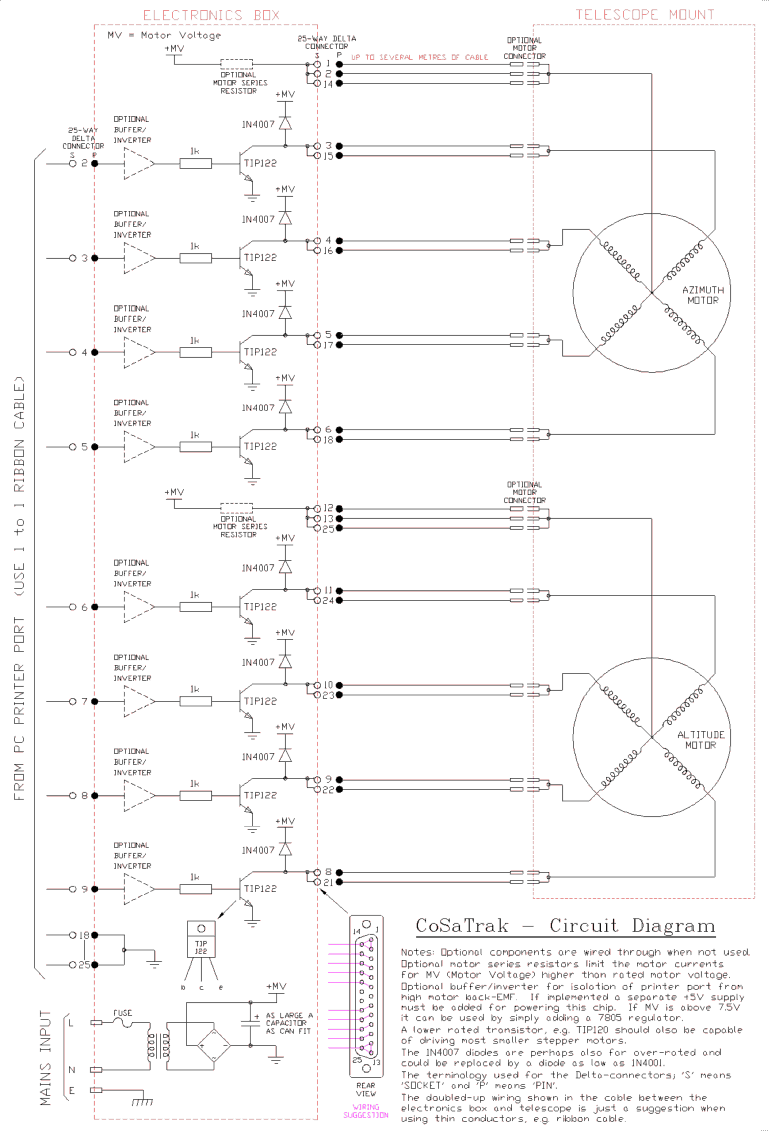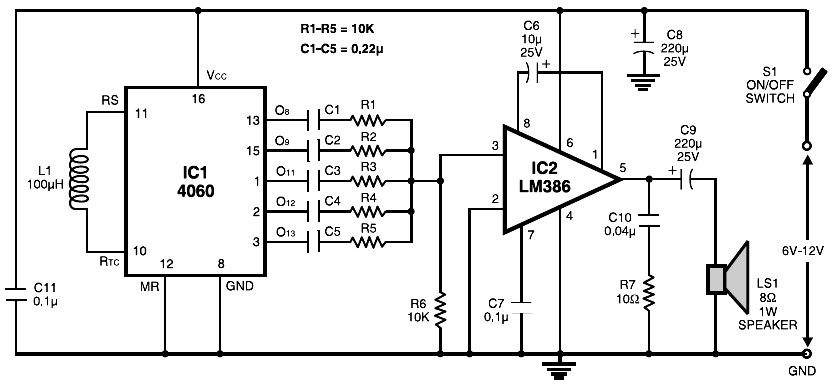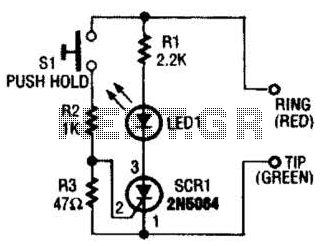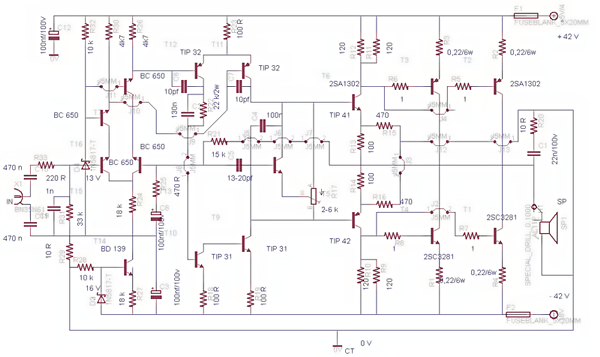
Inverter 12V DC to 240V DC circuit diagram
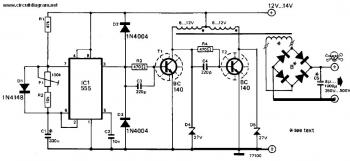
This inverter circuit is designed to power electric razors, stroboscopes, flash tubes, and small fluorescent lamps using a 12-volt car battery. Unlike typical feedback oscillator inverters, this design features a separate oscillator from the output stage, allowing for easy frequency adjustment to accommodate various applications. The oscillator circuit utilizes a 555 timer configured as an astable multivibrator. The inclusion of diode D1 ensures that the duty cycle of the square wave output remains approximately 50%. The output from the 555 timer drives the base of transistor T1, which controls current through one half of the primary winding of the transformer. Transistor T2 is activated from the collector of T1, switching current through the other half of the transformer winding during the opposite half cycles of the drive waveform. Zener diodes D4 and D5 are employed to protect T1 and T2 from high-voltage spikes generated by the transformer. The voltage applied to the primary side of the transformer is stepped up, resulting in the desired high output voltage across the secondary winding. Depending on the specific application, the output voltage may or may not be rectified.
This inverter circuit operates efficiently by utilizing a 555 timer as the core oscillator, configured in an astable mode to generate a continuous square wave signal. The frequency of this signal can be adjusted by varying the resistor and capacitor values connected to the 555 timer, enabling flexibility for different load requirements. The square wave output drives the base of the first transistor (T1), which acts as a switch, allowing current to flow through one half of the transformer’s primary winding. This switching action is crucial for creating the alternating magnetic field necessary for inducing voltage in the secondary winding.
The second transistor (T2) complements T1 by switching current through the other half of the primary winding during the opposite phase of the input signal. This complementary operation ensures that the transformer is effectively utilized, maximizing energy transfer and improving efficiency. The use of Zener diodes D4 and D5 provides essential protection against voltage spikes, which can occur due to the inductive kickback when the transistors switch off. This protection mechanism is vital for maintaining the integrity of the transistors and ensuring long-term reliability of the inverter circuit.
The transformer itself is a critical component, as it steps up the voltage from the primary to the secondary winding. The turns ratio of the transformer determines the output voltage level, which can be tailored to meet the specific requirements of the connected devices. Depending on the application, the output from the secondary winding may either be used directly or passed through a rectifier circuit to convert the AC voltage to DC, suitable for devices that require a stable DC input. This inverter circuit's design is versatile, making it suitable for a range of applications where portable or battery-operated power sources are necessary.This inverter circuit can be used to power electric razors, stroboscopes and flash tubes, and small fluorescent lamps from a 12 volt car battery. In contrast to the usual feedback oscillator type of inverter, the oscillator of this inverter is separate from the output stage, which allows easy adjustment of the oscillator frequency to suit differen
t applications. The oscillator circuit consists of a 555 timer connected as an astable multivibrator. The inclusion of D1 ensures that the duty-cycle of the squarewave output is maintained at about 50%. The output of the 555 drives the base of T1 which switches current through one half of the primary of the transformer. T2 is driven from the collector of Tl and thus switches current through the other half of the transformer winding on opposite half cycles of the drive waveform.
Zener diodes D4 and D5 protect Tl and T2 from any high-voltage spikes generated by the transformer. The voltage applied to the transformer primary is stepped up and the required high output voltage appears across the secondary winding. Depending on the application the secondary voltage may or may not be rectified. 🔗 External reference
This inverter circuit operates efficiently by utilizing a 555 timer as the core oscillator, configured in an astable mode to generate a continuous square wave signal. The frequency of this signal can be adjusted by varying the resistor and capacitor values connected to the 555 timer, enabling flexibility for different load requirements. The square wave output drives the base of the first transistor (T1), which acts as a switch, allowing current to flow through one half of the transformer’s primary winding. This switching action is crucial for creating the alternating magnetic field necessary for inducing voltage in the secondary winding.
The second transistor (T2) complements T1 by switching current through the other half of the primary winding during the opposite phase of the input signal. This complementary operation ensures that the transformer is effectively utilized, maximizing energy transfer and improving efficiency. The use of Zener diodes D4 and D5 provides essential protection against voltage spikes, which can occur due to the inductive kickback when the transistors switch off. This protection mechanism is vital for maintaining the integrity of the transistors and ensuring long-term reliability of the inverter circuit.
The transformer itself is a critical component, as it steps up the voltage from the primary to the secondary winding. The turns ratio of the transformer determines the output voltage level, which can be tailored to meet the specific requirements of the connected devices. Depending on the application, the output from the secondary winding may either be used directly or passed through a rectifier circuit to convert the AC voltage to DC, suitable for devices that require a stable DC input. This inverter circuit's design is versatile, making it suitable for a range of applications where portable or battery-operated power sources are necessary.This inverter circuit can be used to power electric razors, stroboscopes and flash tubes, and small fluorescent lamps from a 12 volt car battery. In contrast to the usual feedback oscillator type of inverter, the oscillator of this inverter is separate from the output stage, which allows easy adjustment of the oscillator frequency to suit differen
t applications. The oscillator circuit consists of a 555 timer connected as an astable multivibrator. The inclusion of D1 ensures that the duty-cycle of the squarewave output is maintained at about 50%. The output of the 555 drives the base of T1 which switches current through one half of the primary of the transformer. T2 is driven from the collector of Tl and thus switches current through the other half of the transformer winding on opposite half cycles of the drive waveform.
Zener diodes D4 and D5 protect Tl and T2 from any high-voltage spikes generated by the transformer. The voltage applied to the transformer primary is stepped up and the required high output voltage appears across the secondary winding. Depending on the application the secondary voltage may or may not be rectified. 🔗 External reference


